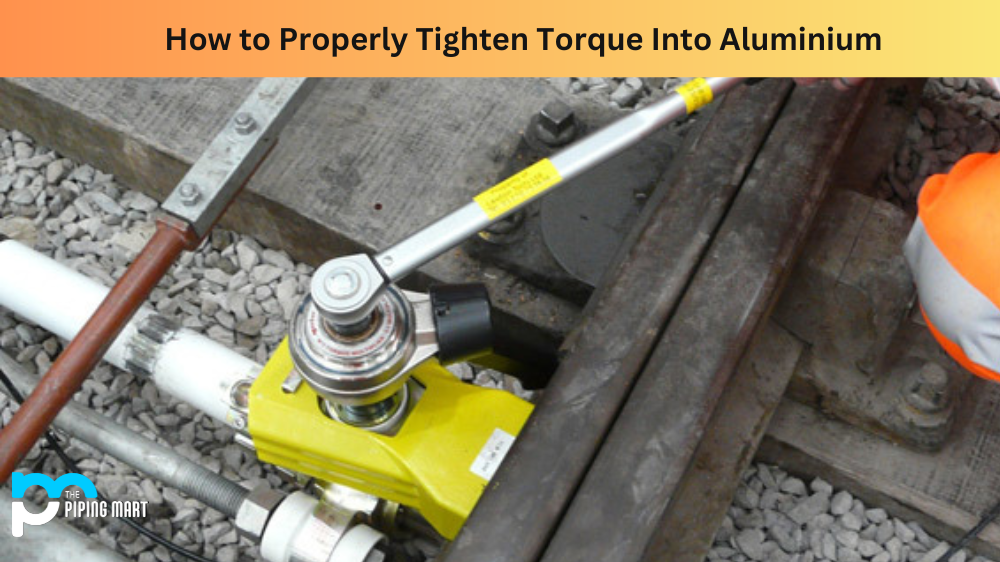When using torque in aluminum, it’s essential to understand the different approaches and tools necessary for proper installation. Various methods should be employed when working with aluminum, from tightening bolts to achieving the correct pressure on a washer. This blog post will cover the best practices for adequately tightening torque into aluminum.
Step-by-Step Guide
The Right Tools for the Job
When tightening bolts and other fasteners into aluminum, it is essential to use the right tools for the job. For most applications, a hand-held ratchet wrench is ideal as it provides enough torque to ensure proper installation without damaging the surface of the aluminum. Additionally, some applications may require an impact wrench or socket set, depending on the material used. It is also important to note that certain fasteners require specific torque settings—so make sure you read up on what kind of torque specifications your application needs before beginning work.
Using Adhesives and Washers
In some cases, adhesives can be used with bolts or other fasteners when tightening into aluminum. This helps to create a strong bond between the two surfaces and prevents any movement or loosening over time. Additionally, washers can be inserted between two characters to achieve even more pressure and stability during installation. Washers come in various sizes and shapes, so choose one that fits your application correctly.
Pay Attention To Temperature and Humidity
When working with any type of metalwork, including aluminum, temperature, and humidity should also be considered, as these can affect how well your materials are tightened together. Heat and moisture can cause bolts or other fasteners to become loose over time due to expansion or contraction due to environmental conditions. So always ensure you keep an eye on these factors during installation.
Tightening Torque into Aluminium
When it comes to tightening torque into aluminium, it’s important to exercise both precision and care. Aluminium is a highly versatile and lightweight material that has become increasingly popular in manufacturing and construction. However, it can also be fragile and prone to damage if excessive force is applied during the tightening process. That’s why using the correct torque value is crucial to ensure that the screws or bolts are securely fastened without causing any damage to the aluminium component. It’s always better to err on the side of caution when working with aluminium; after all, a little bit of extra diligence can go a long way in ensuring a job done well.
Bolt Torque in Aluminum
Bolt torque in aluminum can be a tricky subject for those who are not familiar with it. Aluminum is a soft metal, which means that it can easily deform or strip if the bolt is over-torqued. On the other hand, under-torquing a bolt can cause it to come loose, leading to safety hazards. It is important to find a balance between the two extremes and ensure that the correct torque is applied to bolts in aluminum. Special care needs to be taken while tightening fasteners, and it is necessary to follow the manufacturer’s recommendations. With the right techniques and precautions, bolts can be torqued correctly and safely in aluminum.
Conclusion:
Installing torque correctly into aluminum requires knowledge of different tools and techniques and an understanding of how temperature and humidity can affect your projects over time. By ensuring you have all the right tools for the job and using adhesives and washers when necessary, you can ensure that your projects remain secure no matter what environment they are installed in! With these tips in mind, you’ll be able to tighten torque properly into any aluminum project!

Pipingmart is B2B portal specializes in industrial, metal and piping products. Also, share latest information and news related to products, materials and different types grades to help business dealing in this industry.




